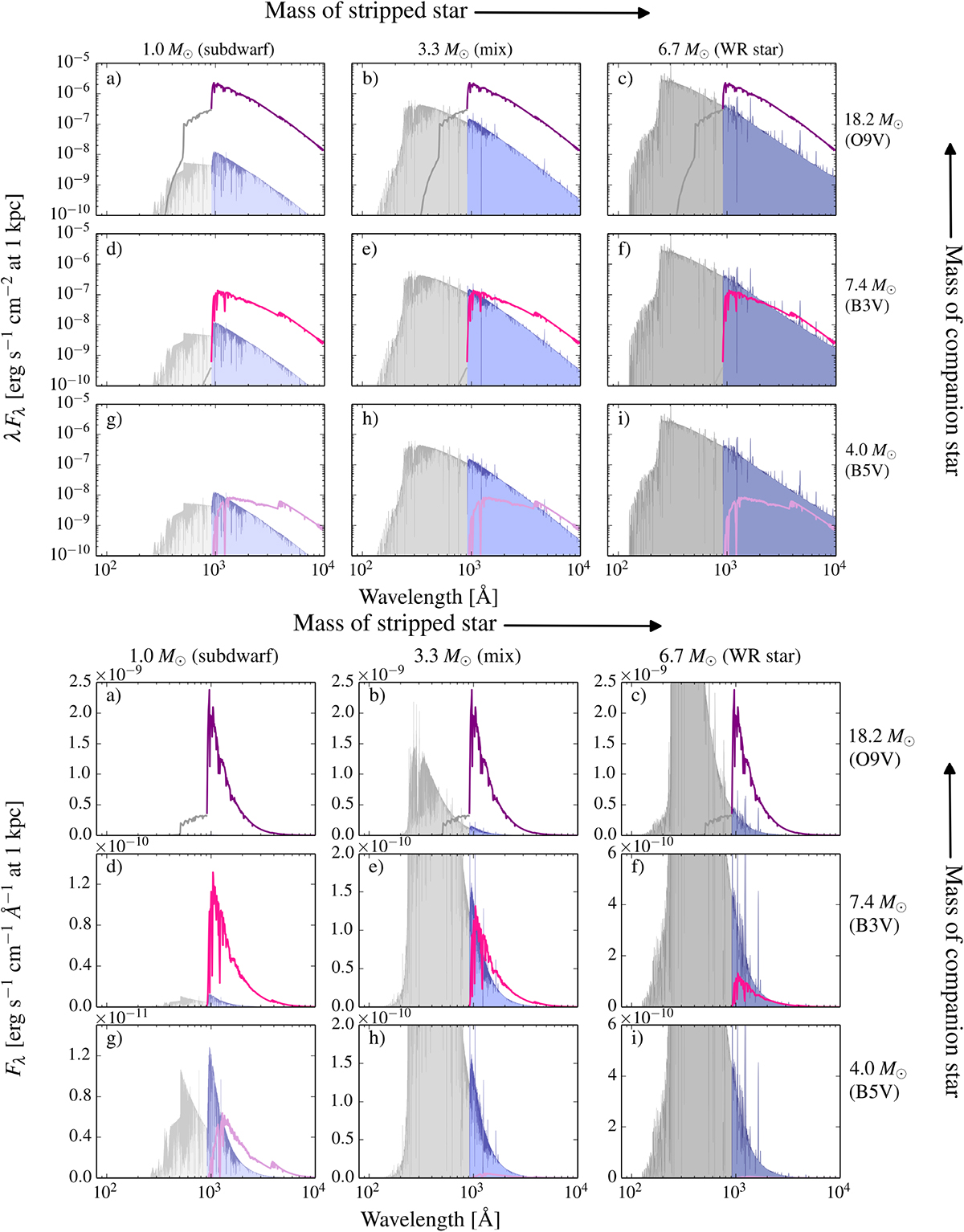Fig. 7

Examples of binary systems containing a stripped star and a main sequence companion. We pick three typical stripped stars: a subdwarf (left column), a stripped star with both absorption and emission lines (middle column), and a WR star (right column). We pair each of these with three possible main sequence companion stars: one of 4 (B5V, bottom row), one of 7.4 (B3V, middle row), and one of 18.2 M⊙ (O9V, top row). The plots show the spectral energy distributions of the stripped star (blue shaded area) and its companion (solid line) in each combination. In the upper panel, we use log-scale, while the bottom panel shows the same binary systems, but has linear scale. We have shaded the ionizing part of the spectra in gray shading as this part is difficult to observe due to the neutral hydrogen in the solar neighborhood. There are also no available instruments that are capable of observingin the ionizing wavelengths.
Current usage metrics show cumulative count of Article Views (full-text article views including HTML views, PDF and ePub downloads, according to the available data) and Abstracts Views on Vision4Press platform.
Data correspond to usage on the plateform after 2015. The current usage metrics is available 48-96 hours after online publication and is updated daily on week days.
Initial download of the metrics may take a while.


